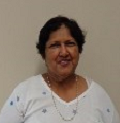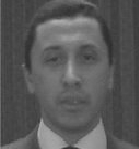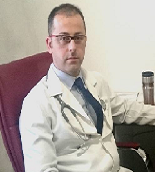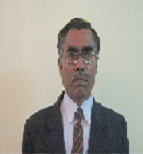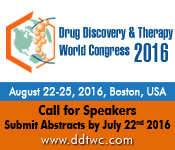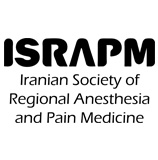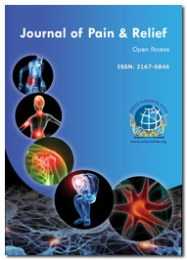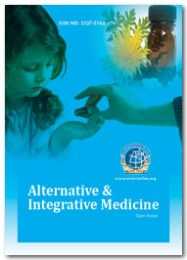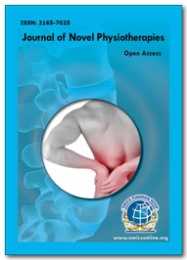Theme: Pain assessment and its management for improvement of the quality of life
Pain Medicine 2016
Track 1: Basics of Pain Management and Rehabilitation
Pain medicine is a branch of medicine employing an interdisciplinary approach for easing the suffering and improving the quality of life of those living with pain. The typical pain management team includes medical practitioners, Pharmacists, Clinical Psychologist, occupational therapists, physician assistant, nurse practitioners and clinical nurse specialists.Pain can be managed using pharmacological or interventional procedures by using pain reliefs. There are many interventional procedures typically used for chronic back pain include epidural steroid injections, facet joint Injections, neurolytic blocks, spinal cord stimulators and intrathecal drug delivery system implants. The Management goals when treating back pain are to achieve maximal reduction in pain intensity as rapidly as possible, to restore the individual’s ability to function in everyday activities, to help the patient cope with residual pain, to assess for side effects of therapy, and to facilitate the patient’s passage through the legal and socioeconomic impediments to recovery. For many the goal is to keep the pain to a manageable level to progress with rehabilitation, which can then lead to long term pain relief. Also, for some people the goal is to use non-surgical therapies to manage the pain and avoid major surgery, while for others surgery may be the quickest way to feel better. Migraines typically present with self-limited, recurrent severe headache associated with autonomic symptoms. About 15-30% of people with migraines experience migraines with an aura. And those who have migraines with aura also frequently have migraines without aura. There are four possible phases of Headache: The Prodrome, which occur hours or days before the headache, The aura, which immediately precedes the headache, The pain phase also known as headache phase, The postdrome, the effects experienced following the end of a migraine attack.
Related Conferences of Basics of Pain Management and Rehabilitation:
4th International Conference and Exhibition on Obesity and Weight Management December 07-09, 2015, Atlanta, USA; 2nd International Conference on Sports Medicine and Fitness April 18-20, 2016, Dubai, UAE; 5th International Conference and Exhibition on Occupational Health & SafetyJune 06-07, 2016 Dallas, USA;3rd International Conference on Health Informatics and Technology June 27-29, 2016 New Orleans, USA;4th International Conference on Translational Medicine October 26-28, 2015, Baltimore, USA;13th IASP Research Symposium: "Bridging The Gaps Between Pain Research and Osteoarthritis Research" September 17 – 19, 2015,Stockholm,Sweden;4th International Conference on Pain Management,November 7-9, 2015, Lucknow, India;Nurse Prescribing for Pain, 22 Sep 2015, London, United Kingdom;Non-Medical Prescribing for Pain,22 Sep 2015, London, United Kingdom
Track 2: Classification of Pain Relief Analgesics
Paracetamol is otherwise called as an acetaminophen used over the counter analgesic (natural pain reliever). Paracetamol is assessed as a light analgesic. it's usually used for the relief of headaches and different minor aches and pain. NSAIDs area unit accustomed relieve pain, inflammation (redness and swelling). NSAIDs area unit most typical pain relief medicines within the world. NSAIDs work on a chemical level. They block the consequences of special enzymes specifically Cox and cyclooxygenase enzymes. These enzymes play a key role in creating prostaglandins. By obstruction the Cox enzymes, NSAIDs stop your body from creating as several prostaglandins. this suggests less swelling and fewer pain. Pain Drug plays a vital role in relieving the pain More people are into sports and other physical activities these days in the hopes of keeping themselves fit. Nevertheless, no matter how much prevention we do, injuries from these activities cannot be averted. Worse, they can add up and recur, if left untreated or not treated properly. Suffering from an injury is a hassle. Besides the fact that you are in pain, you have to cease all of your activities while you are recuperating. After that, you have to train yourself once more to regain your previous peak performance. This is why The Pain Authority is offering biofeedback technology to treat muscle and joint injuries. Biofeedback technology is an easy and non-invasive procedure that could help with the treatment of any bone and muscular injury by releasing electromagnetic charges to the affected areas. It can also alleviate common aches and pains, stopping them from becoming more severe.
Related Conferences of Classification of Pain Relief Analgesics:
3rd International Conference on Health Informatics and Technology June 27-29, 2016 New Orleans, USA;2nd International Conference on Sports Medicine and Fitness April 18-20, 2016, Dubai, UAE; Non-Medical Prescribing for Pain,22 Sep 2015, London, United Kingdom; 5th International Conference and Exhibition on Occupational Health & SafetyJune 06-07, 2016 Dallas, USA;4th International Conference on Translational Medicine October 26-28, 2015, Baltimore, USA;4th International Conference and Exhibition on Obesity and Weight Management December 07-09, 2015, Atlanta, USA13th IASP Research Symposium: "Bridging The Gaps Between Pain Research and Osteoarthritis Research" September 17 – 19, 2015,Stockholm,Sweden;4th International Conference on Pain Management,November 7-9, 2015, Lucknow, India;Nurse Prescribing for Pain, 22 Sep 2015, London, United Kingdom.
Track 3: Physical and Physiological Approaches in Pain Management
Pain medicine and rehabilitation employs numerous physical techniques like thermal agents and electrotherapy, such as therapeutic exercise and behavioral medical care, traditional pharmacotherapy to treat pain, sometimes as a district of knowledge domain or multidisciplinary program Transcutaneous electrical nerve stimulation has been found to be ineffective for lower back pain, but it would facilitate with diabetic neuropathy Acupuncture involves the insertion and manipulation of needles into specific points on the body to alleviate pain or for therapeutic functions. Research has not found proof that light therapy like low level optical device medical care is a good medical care for pain relief Cognitive behavioral Therapy (CBT) for pain helps patients with pain to know the link between one's physiology (e.g., pain and muscle tension), thoughts, emotions, and behaviors. A meta-analysis of studies that used techniques targeted around the thought of mindfulness, concluded, "Findings counsel that MBIs decrease the intensity of pain for chronic pain patients." Occupational therapists could use a range of interventions as well as training program, relaxation, goal setting, drawback determination, planning, and carry this out at intervals each cluster and individual settings. Therapists may go at intervals a clinic setting, or within the community as well as the work, school, home and health care centers. activity therapists could assess activity performance before and when intervention, as a live of effectiveness and reduction in disability.
Related Conferences of Physical and Physiological Approaches in Pain Management:
2nd Annual Congress & Medicare Expo On Primary Healthcare September 15-17, 2016 Dubai, UAE;5th International Conference and Exhibition on Occupational Health & Safety June 06-07, 2016 Dallas, USA;Global Health Economics Summit July 25-26, 2016 Berlin, Germany;4th Asia-Pacific Global Summit & Expo on Healthcare July 18-20, 2016 Brisbane, Australia;International Conference and Exhibition on Nanomedicine and Nanotechnology In Health Care July 25-27, 2016 Bangkok, Thailand;9th Congress of the European Pain Federation, 02 Sep 2015-05 Oct 2015, Vienna, Austria;ICAP — UAE International Conference & Exhibition on Anaesthesia & Pain Medicine, 18 Sep 2015-19 Sep 2015, Dubai, United Arab Emirates;4th International Conference on Pain Management,November 7-9, 2015, Lucknow, India;Nurse Prescribing for Pain, 22 Sep 2015, London, United Kingdom.
Track 4: Interventional Pain Medicine
Interventional pain medicine may be a subspecialty of the medicine, pain management, dedicated to the employment of invasive techniques like aspect joint injections, nerve blocks (interrupting the flow of pain signals on specific nervous pathways), neuro augmentation (including peripheral nerve stimulation), vertebroplasty, kyphoplasty, nucleoplasty, percutaneous spine fusion and implantable pain drug delivery systems. Radiotherapy is employed once drug treatment is failing to regulate the pain of a growing tumor, like penetration of soft tissue, or compression of sensory nerves. Often, low doses are capable of producing analgesia thought to be due to reduction in pressure or, possibly, interference with the tumor's production of pain-promoting chemicals. A neurolytic block is that the deliberate injury of a nerve by the appliance of chemicals (in that case the procedure is termed "neurolysis") or physical agents like freezing or heating ("neurotomy"). These interventions cause degeneration of the nerve's fibers and temporary interference with the transmission of pain signals. Delivery of an opioid like fentanyl, sufentanyl or meperidine directly into the subarachnoid cavity provides increased enhanced analgesia with reduced general aspect effects, and has reduced the amount of pain in otherwise intractable cases.Epidural infusion is suggested with long run use in order to reduce the prospect of any infection at the exit site reaching the epidural area Ongoing electrical stimulation of structures deep within the brain – the periaqueductal gray and periventricular gray for nociceptive pain, and the internal capsule, ventral posterolateral nucleus and ventral posteromedial nucleus for neuropathic pain – has produced impressive results with some patients but results vary and appropriate patient selection is important.
Related Conferences of Interventional Pain Medicine:
4th International Conference on Translational Medicine October 26-28, 2015, Baltimore, USA;2nd International Conference on Sports Medicine and Fitness April 18-20, 2016, Dubai, UAE; Non-Medical Prescribing for Pain,22 Sep 2015, London, United Kingdom; 5th International Conference and Exhibition on Occupational Health & SafetyJune 06-07, 2016 Dallas, USA;4th International Conference on Translational Medicine October 26-28, 2015, Baltimore, USA;4th International Conference and Exhibition on Obesity and Weight Management December 07-09, 2015, Atlanta, USA13th IASP Research Symposium: "Bridging The Gaps Between Pain Research and Osteoarthritis Research" September 17 – 19, 2015,Stockholm,Sweden;4th International Conference on Pain Management,November 7-9, 2015, Lucknow, India;Nurse Prescribing for Pain, 22 Sep 2015, London, United Kingdom.
Track 5: Pain Syndrome
Carpal tunnel syndrome (CTS) may be a medical condition within which the median nerve is compressed because it travels through the carpus at the carpal tunnel and causes pain, symptom and tingling, within a part of the hand that receives sensation from the median nerve. Piriformis syndrome may be a neuromuscular disorder that happens once the Sciatic nerve is compressed or otherwise irritated by the piriformis muscle inflicting pain, tingling and symptom within the buttocks and on the trail of the nerve descending the lower thigh and into the leg. Complex regional pain syndrome (CRPS) it's a chronic general unwellness characterized by severe pain, swelling, and changes within the skin. CRPS usually worsens over time. it's going to at the start associate effect on} an arm or leg and unfold throughout the body; thirty fifth of individuals report symptoms throughout their whole body. Alternative potential effects include: general involuntary dysregulation; animal tissue edema; system, endocrine, or medical specialty manifestations; and changes in urological or gi operate. Central pain syndrome may be a neurologic condition caused by injury or malfunction within the Central system (CNS) that causes a sensitization of the pain system. The extent of pain and also the area unit as affected are associated with the reason behind the injury. Compartment syndrome is augmented pressure inside one in all the body's compartments that contains muscles and nerves. Compartment syndrome most typically happens in compartments within the leg or arm. There area unit 2 main sorts of compartment syndrome: acute and chronic. Fibromyalgia (FM) may be a medical condition characterised by chronic widespread pain and a heightened and painful response to pressure. Symptoms apart from pain might occur, resulting in the utilization of the term Fibromyalgia syndrome (FMS). Alternative symptoms embrace feeling tired to a degree that ordinary activities area unit affected, sleep disturbance, and joint stiffness. Some folks additionally report problem with swallowing bowl and bladder abnormalities.
Related Conferences of Pain Syndrome:
3rd International Conference on Health Informatics and Technology June 27-29, 2016 New Orleans, USA;4th International Conference and Exhibition on Obesity and Weight Management December 07-09, 2015, Atlanta, USA; 2nd International Conference on Sports Medicine and Fitness April 18-20, 2016, Dubai, UAE; 5th International Conference and Exhibition on Occupational Health & SafetyJune 06-07, 2016 Dallas, USA;3rd International Conference on Health Informatics and Technology June 27-29, 2016 New Orleans, USA;4th International Conference on Translational Medicine October 26-28, 2015, Baltimore, USA;Nurse Prescribing for Pain, 22 Sep 2015, London, United Kingdom;Non-Medical Prescribing for Pain,22 Sep 2015, London, United Kingdom;13th IASP Research Symposium: "Bridging The Gaps Between Pain Research and Osteoarthritis Research" September 17 – 19, 2015,Stockholm,Sweden;4th International Conference on Pain Management,November 7-9, 2015, Lucknow, India;
Track 6: Cancer Pain Management
Pain in cancer might arise from a tumor compressing or infiltrating close body parts; from treatments and diagnostic procedures; or from skin, nerve and different changes caused by a hormone imbalance or immune response. Most chronic (long-lasting) pain is caused by the sickness and most acute (short-term) pain is caused by treatment or diagnostic procedures. However, radiation therapy and therapy might turn out painful conditions that persist long when treatment has complete. Peripheral neuropathy may be a set of symptoms caused by injury to the nerves that are away from the brain and neural structure. These distant nerves are referred to as peripheral nerves. They carry sensations (feeling) to the brain and management the movement of our arms and legs. They additionally manage the bladder and intestine. Inflammation is a component of the advanced biological response of body tissues to harmful stimuli, like pathogens, broken cells, or irritants. Inflammation may be a protecting response that involves immune cells, blood vessels, and molecular mediators. The aim of inflammation is to eliminate the initial reason for cell injury, filter out necrotic cells and tissues broken from the first insult and therefore the inflammatory method, and to initiate tissue repair. The classical signs of acute inflammation such as pain, heat, redness, swelling, and loss of function. Inflammation may be a generic response, and so it's thought-about as a mechanism of innate immunity, as compared to adaptative immunity, which is restricted for each pathogen.
Related Conferences of Cancer Pain Management:
Global Health Economics Summit July 25-26, 2016 Berlin, Germany;4th Asia-Pacific Global Summit & Expo on Healthcare July 18-20, 2016 Brisbane, Australia;International Conference and Exhibition on Nanomedicine and Nanotechnology In Health Care July 25-27, 2016 Bangkok, Thailand;3rd International Conference on Health Informatics and Technology June 27-29, 2016 New Orleans, USA;2nd International Conference on Sports Medicine and Fitness April 18-20, 2016, Dubai, UAE;2nd Annual Congress & Medicare Expo On Primary Healthcare September 15-17, 2016 Dubai, UAE;5th International Conference and Exhibition on Occupational Health & Safety June 06-07, 2016 Dallas, USA;4th International Conference on Pain Management,November 7-9, 2015, Lucknow, India;Nurse Prescribing for Pain, 22 Sep 2015, London, United Kingdom;ICAP — UAE International Conference & Exhibition on Anaesthesia & Pain Medicine, 18 Sep 2015-19 Sep 2015, Dubai, United Arab Emirates
Track 7: Pharmacological in Pain Management and Pain Management Techniques
There are several pharmacological interventions that may be accustomed manage pain in arthritis. However, in choosing the acceptable approach, the practitioner must take into account to consider the efficacy. Adverse side effects, dosing frequency, patient preference, and cost in choosing medication for pain management. When a patient develops the primary signs of an inflammatory arthritis, the most priority is symptom relief, with pain being the cardinal sign of inflammation that patients most wish facilitate with. However, it has become more and more clear that for inflammatory arthropathies like RA merely treating the symptoms with non- Steroidal anti- inflammatory drugs (NSAIDs) or analgesics in adequate, because features of the disease that lead to damage to the joints, and then to disability will carry on uncheck. In addition to symptoms –relieving drugs, patients also need disease-modifying pain drugs that have been demonstrated to slow down or stop the damaging aspects of disease There are two aims in the pharmacological treatment; firstly to reduce inflammation or modulate the auto immune response and secondly to modulate the pain response. Medications is thought-about in 5 classes: simple analgesics, non –steroidal anti -inflammatory drugs (NSAIDs), Disease modifying anti-rheumatic-drugs (DMARD’S), Steroids, Biologics and other relevant Adjuvant analgesics (ex. antiepileptic and antidepressants used for pain relief)
Related Conferences of Pharmacological in Pain Management and Pain Management Techniques:
Global Health Economics Summit July 25-26, 2016 Berlin, Germany;4th Asia-Pacific Global Summit & Expo on Healthcare July 18-20, 2016 Brisbane, Australia;International Conference and Exhibition on Nanomedicine and Nanotechnology In Health Care July 25-27, 2016 Bangkok, Thailand;9th Congress of the European Pain Federation, 02 Sep 2015-05 Oct 2015, Vienna, Austria;2nd Annual Congress & Medicare Expo On Primary Healthcare September 15-17, 2016 Dubai, UAE;5th International Conference and Exhibition on Occupational Health & Safety June 06-07, 2016 Dallas, USA;4th International Conference on Pain Management,November 7-9, 2015, Lucknow, India;Nurse Prescribing for Pain, 22 Sep 2015, London, United Kingdom;ICAP — UAE International Conference & Exhibition on Anaesthesia & Pain Medicine, 18 Sep 2015-19 Sep 2015, Dubai, United Arab EmiratesPain Management
Track 8: Chronic Pain Management
Chronic pain is pain that lasts a drawn-out time. In medication, the excellence between acute pain and chronic pain has historically has been determined by an discretional interval of your time since onset; the 2 most typically used markers being 3 months and 6 months since onset, though some theorists and researchers have placed the transition from acute to chronic pain at twelve months. Electrical Nerve Stimulation for Chronic Pain may be a procedure that uses AN electrical current to treat chronic pain management Peripheral nerve stimulation (PNS) space 2 varieties of electrical nerve stimulation. In either, atiny low generator sends electrical pulses to the nerves (In peripheral nerve stimulation) or to the funiculus (in funiculus stimulation) These pulses interfere with the nerve impulses that cause you to feel pain.
Related Conferences of Chronic Pain Management:
4th International Conference on Translational Medicine October 26-28, 2015, Baltimore, USA;2nd International Conference on Sports Medicine and Fitness April 18-20, 2016, Dubai, UAE; Non-Medical Prescribing for Pain,22 Sep 2015, London, United Kingdom; 5th International Conference and Exhibition on Occupational Health & SafetyJune 06-07, 2016 Dallas, USA;4th International Conference on Translational Medicine October 26-28, 2015, Baltimore, USA;4th International Conference and Exhibition on Obesity and Weight Management December 07-09, 2015, Atlanta, USA13th IASP Research Symposium: "Bridging The Gaps Between Pain Research and Osteoarthritis Research" September 17 – 19, 2015,Stockholm,Sweden;4th International Conference on Pain Management,November 7-9, 2015, Lucknow, India;Nurse Prescribing for Pain, 22 Sep 2015, London, United Kingdom.
Track 9: Pain Management Medications
Narcotics also referred to as opioid pain relievers are used only for pain that's severe and is not helped by other forms of painkillers. When used used rigorously and underneath a doctor's direct care, these medication are often effective at reducing pain. Narcotics work by binding to receptors into the brain, that blocks the sensation of pain. When used rigorously and underneath a doctor's direct care, they'll be effective at reducing pain. Antidepressant medication for treatment of depression as well as other different disorders that will occur alone or together with depression, like chronic pain, sleep disorders, or anxiety disorders. Antidepressants are medication used for the treatment of major depressive disorder and different conditions, chronic pain and neuropathic pain. Anticonvulsants, or anti-seizure medications, work as adjuvant analgesics. In different words, they can treat some forms of chronic pain even if they're not designed for that purpose. whereas the most use of anti-seizure medication is preventing seizures, anticonvulsants do seem to be effective at treating certain forms of chronic pain. These include neuropathic pain, like peripheral neuropathy, and chronic headaches like migraines.
Related Conferences of Pain Management Medications:
International Conference and Exhibition on Nanomedicine and Nanotechnology In Health Care July 25-27, 2016 Bangkok, Thailand;Global Health Economics Summit July 25-26, 2016 Berlin, Germany;4th Asia-Pacific Global Summit & Expo on Healthcare July 18-20, 2016 Brisbane, Australia;9th Congress of the European Pain Federation, 02 Sep 2015-05 Oct 2015, Vienna, Austria;2nd Annual Congress & Medicare Expo On Primary Healthcare September 15-17, 2016 Dubai, UAE;5th International Conference and Exhibition on Occupational Health & Safety June 06-07, 2016 Dallas, USA;4th International Conference on Pain Management,November 7-9, 2015, Lucknow, India;Nurse Prescribing for Pain, 22 Sep 2015, London, United Kingdom;ICAP — UAE International Conference & Exhibition on Anaesthesia & Pain Medicine, 18 Sep 2015-19 Sep 2015, Dubai, United Arab Emirates.
Track 10: Novel Therapeutic Approaches for Pain Management
Ketamine (INN) could be a medication used primarily for beginning and maintaining anesthesia. Alternative uses includes sedation in Intensive Care as a pain killer as treatment of bronchosspasm, as a treatment for Complex regional pain syndrome and as a treatment for complex Regional Pain Syndrome and as an antidepressant. It induces a trance like state whereas providing pain relief sedation and memory loss. Pharmacologically, Ketamine is assessed as an NMDA receptor antagonist, however it additionally acts at varied alternative sites (including opioid receptors and monoamine transporters). Like alternative drugs in its category, such as phencyclidine (PCP), it's classified as a dissociative agent. Ketamine is also used for surgical pain management. Low doses of ketamine reduce morphine use and nausea and Vomiting after surgery. Top quality evidence in acute pain is insufficient to determine if ketamine is useful during this situation. It may even be used as an Intravenous analgesic with opiates to manage otherwise Intractable pain, significantly if this pain is neuropathic. It is the additional advantage of counteracting spinal sensitization or wind-up phenomena experienced with chronic pain management. At these doses, the Psychotropic side effects are less apparent and well managed with benzodiazepines. Ketamine is an analgesic that is most effective when used alongside a low-dose opioid; as whereas it will have analgesic effects by itself, the higher doses needed will cause disorienting aspect effects. A review in 2013 concluded, "Despite limitations in the breadth and depth of data available. there's proof that ketamine may be a viable option for treatment-refractory cancer pain".Low-dose ketamine hydrochloride is typically utilized in the treatment of Complex regional pain syndrome (CRPS).
Related Conferences of Novel Therapeutic Approaches for Pain Management:
International Conference and Exhibition on Medical Writing and Healthcare Communications April 28-29, 2016 Dubai, UAE;4th Asia-Pacific Global Summit & Expo on Healthcare July 18-20, 2016 Brisbane, Australia;Global Health Economics Summit July 25-26, 2016 Berlin, Germany; International Conference and Exhibition on Nanomedicine and Nanotechnology In Health Care July 25-27, 2016 Bangkok, Thailand;9th Congress of the European Pain Federation, 02 Sep 2015-05 Oct 2015, Vienna, Austria;2nd Annual Congress & Medicare Expo On Primary Healthcare September 15-17, 2016 Dubai, UAE;9th Congress of the European Pain Federation, 02 Sep 2015-05 Oct 2015, Vienna, Austria;Non-Medical Prescribing for Pain,22 Sep 2015, London, United Kingdom;Nurse Prescribing for Pain, 22 Sep 2015, London, United Kingdom;ICAP — UAE International Conference & Exhibition on Anaesthesia & Pain Medicine, 18 Sep 2015-19 Sep 2015, Dubai, United Arab Emirates
Track 11: Pain Management in Nursing
Perianesthesia Nursing could be a nursing specialty practice area involved with providing medical care to patients undergoing or convalescent from anaesthesia. Perianesthesia nursing encompasses many subspeciality observe space and represents a various range of Practise environment and skill sets. Pain management nurses are typically thought-about to be perianesthesia nurses, given the cooperative nature of their work with anesthetists and also the fact that a large proportion of acute pain issues are surgery related. However, distinct pain management certifications exist through the American Society for Pain Management Nurses.
Related Conferences of Pain Management in Nursing:
5th International Conference and Exhibition on Occupational Health & Safety June 06-07, 2016 Dallas, USA;Global Health Economics Summit July 25-26, 2016 Berlin, Germany;4th Asia-Pacific Global Summit & Expo on Healthcare July 18-20, 2016 Brisbane, Australia;International Conference and Exhibition on Nanomedicine and Nanotechnology In Health Care July 25-27, 2016 Bangkok, Thailand;3rd International Conference on Health Informatics and Technology June 27-29, 2016 New Orleans, USA;2nd International Conference on Sports Medicine and Fitness April 18-20, 2016, Dubai, UAE;4th International Conference and Exhibition on Obesity and Weight Management December 07-09, 2015, Atlanta, USA13th IASP Research Symposium: "Bridging The Gaps Between Pain Research and Osteoarthritis Research" September 17 – 19, 2015,Stockholm,Sweden;4th International Conference on Pain Management,November 7-9, 2015, Lucknow, India;Nurse Prescribing for Pain, 22 Sep 2015, London, United Kingdom.
OMICS International Conferences invites all the participants from all over the world to attend 2nd International Conference and Exhibition on Pain Medicine during August 04-05, 2016 at New Orleans, USA which includes prompt Keynote presentations,Oral talks,Poster presentations and Exhibitions.
Pain Medicine 2016 will be organized around the theme “Pain assessment and its management for improvement of the quality of life”. This annual Pain Medicine conference is a remarkable event which brings together a unique and international mix of large and medium medical and clinical research and diagnostic companies, leading universities and medical research institutions making the conference a perfect platform to share experience, foster collaborations across industry and academia and evaluate emerging innovations around the world.
In the light of this theme, the conference series aims to provide a forum for international researchers from various areas of pain medicine.This conference brings together individuals who are interested in fields of Pain Medicine & Rehabilitation to discuss the involved basics in Pain Management & Rehabilitation, Physical & Physiological approaches in Pain management, Pain relief Analgesics , Interventional pain management, Cancer pain management as well as Novel Therapeutic approaches for pain management paving way to explore issues of mutual concern as well as exchange knowledge, share evidence and ideas, and generate solutions.The future level of global spending on medicines underscores the similar challenges of access and affordability which face those who consume and pay for healthcare around the world. Statistic shows the market value of over the counter pain relief products in the United States in 2013, by outlet type. In that year, internal analgesic liquid pain relief products that were sold at multi-outlets in the United States had a market value of 390.3 millionU.S.dollars.
OMICS International Organises 300+Conferences Every Year across USA, Europe & Asia with support from 1000 more scientific societies and Publishes 400+Open access Journals which contains over 30000 eminent personalities, reputed scientists as editorial board members.
Target Audience:
Chemistry Eminents, Professors and Scientists
Pharma Professors and Students from Academia
Cancer Specialists
Gynaecologists
Orthopaedics
Neuropsychologists
Forensic Experts
Directors/Managers & Business Intelligence Experts of Pharma Industires.
Pharmacology Department
Clinical Research & Clinical Data Management
Vice Presidents/Directors & Brand Manufacturers & Retailers
Quality Check Chemists
Advertising and Promotion Agency Executives,
Solution Providers(Retail design, and Retail execution)
The future level of global spending on medicines underscores the similar challenges of access and affordability which face those who consume and pay for healthcare around the world. Alternatively, the fast growing of pharmerging markets will be driven predominantly by economic gains and rising income,particularly for the lowest earners,coupled with government commitments to support expanded access to basic healthcare services,which will make medicines more broadly available and affordable to millions of people. Developed markets will account for 57% of total spending,down from 73% in 2006.
Statistic shows the market value of over the counter pain relief products in the United States in 2013,by outlet type. In that year, internal analgesic liquid pain relief products that were sold at multi-outlets in the United States had a market value of 390.3 millionU.S.dollars. Developed markets will account for 57% of total spendings, down from 73% in 2006. Pharmerging markets surpassed EU5 in total spending in 2010 and will reach 30% of global spending in 2016, as millions more people gain access to basic medicines.
Target Audience:
Rehabilitation Doctors,Researchers,Pharmacists,Physiotherapist,Neurologist,Pain management Doctors, Professors, Presidents, Oncologist, Acupuncturist, Anesthesiologist-Pain Specialist, Medical Doctors, Pharmacologist, Drug Developers, Students from Academia in the study of Pain Management and Pain Medicine.
Top Universities in USA:
- University of Chicag
- University of Illinois
- Loyola University
- Northwestern University
- University of California
- University of Michigan
Statistics of Companies Associated with Pain Medicine
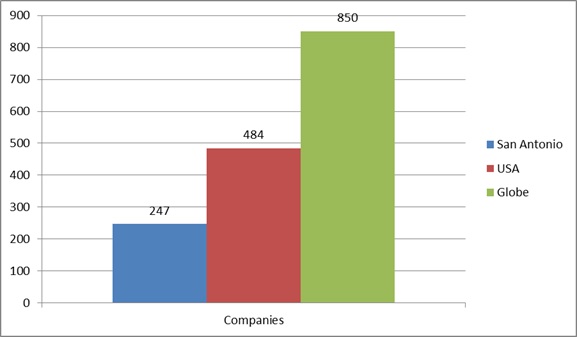
Figure 3:Companies Associated Pain Medicine
Glance at Market of Pain Medicine:
The future level of global spending on medicines underscores the similar challenges of access and affordability which face those who consume and pay for healthcare around the world. Alternatively, the fast growing of pharmerging markets will be driven predominantly by economic gains and rising income,particularly for the lowest earners,coupled with government commitments to support expanded access to basic healthcare services,which will make medicines more broadly available and affordable to millions of people. Developed markets will account for 57% of total spending,down from 73% in 2006. Statistic shows the market value of over the counter pain relief products in the united states in 2013,by outlet type. In that year, internal analgesic liquid pain relief products that were sold at multi-outlets in the United States had a market value of 390.3 millionU.S.dollars. From 2006-2010 the global spending on medicine were found to be 658 (in billion dollars),2011 the global spending’s on market has been increased to 956 (in Billion dollars), whereas in future 2016 it is expected to be 1,205(in Billion dollars) Pharmerging markets surpassed EU5 in total spending in 2010 and will reach 30% of global spending in 2016,as millions more people gain access to basic medicines.
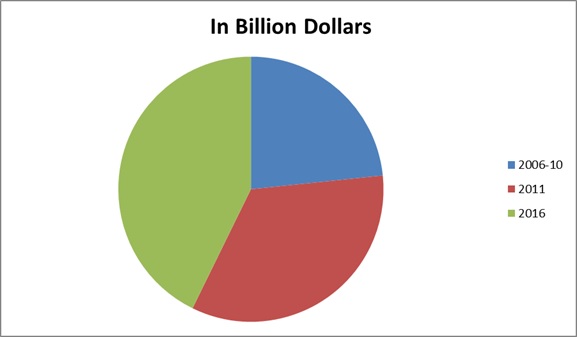
Figure 4: Global Market Spend Growth Forecast
Statistics of Physicians, Researchers and Academicians working on Pain Medicine:
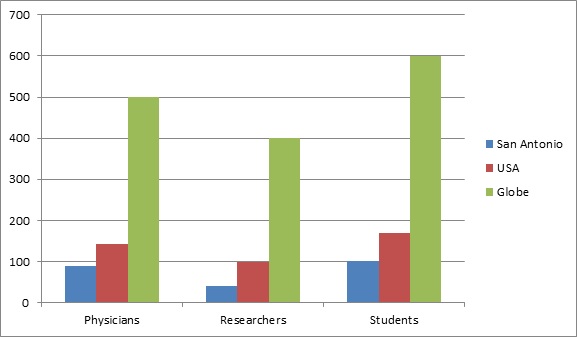
Figure 5: Statistics of Physicians, Researchers and Academicians
Conference Highlights
- Basics of Pain Management and Rehabilitation
- Classification of Pain Relief Analgesics
- Physical and Physiological Approaches in Pain Medicine
- Interventional Pain Medicine
- Pain Syndrome
- Cancer Pain Medication
- Pharmacological Approaches for Pain
- Chronic Pain Medication
- Pain Medication
- Novel Therapeutic Approaches for Pain Medicine
- Pain Management Nursing
- Pharma Market Audit
- Orofacial Pain
- Drug Discovery and Development
To share your views and research, please click here to register for the Conference.
To Collaborate Scientific Professionals around the World
| Conference Date | August 04-05, 2016 | ||
| Sponsors & Exhibitors |
|
||
| Speaker Opportunity Closed | Day 1 | Day 2 | |
| Poster Opportunity Closed | Click Here to View | ||
Useful Links
Special Issues
All accepted abstracts will be published in respective Our International Journals.
- Journal of Pain & Relief
- International Journal of Physical Medicine & Rehabilitation
- Journal of Novel Physiotherapies
Abstracts will be provided with Digital Object Identifier by





